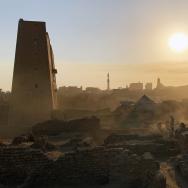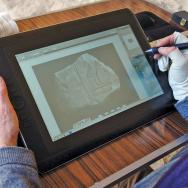More than 3,500 years ago, a rising kingdom called the Hittite Empire was expanding, testing the limits of its strength. It would soon destroy Babylon, but first, its army sacked and burned a city nestled in the mountains of modern-day Turkey called Sam’al—located on a major route of trade between Mesopotamia and the Mediterranean Sea.
The charred ruins from that fateful day were uncovered for the first time in millennia during an excavation by the University of Chicago’s Oriental Institute, which is celebrating its 100th anniversary this year. The excavation is part of the OI’s mission to understand the ancient Middle East, which has helped shape our picture of Western civilization.
“It’s an incredibly lucky find. Every archaeologist hopes for an intact destruction layer because it gives you a snapshot of a day in the life of this town,” said David Schloen, a professor of Near Eastern Languages and Civilizations and a leading scholar of the ancient Middle Eastern world who co-directs the excavation. “Pottery is still sitting inside the buildings where the inhabitants left it in 1650 B.C. You know that everything is where it would be on a typical day, which is really valuable cultural knowledge.”












 —Prof. Kunle Odunsi
—Prof. Kunle Odunsi
